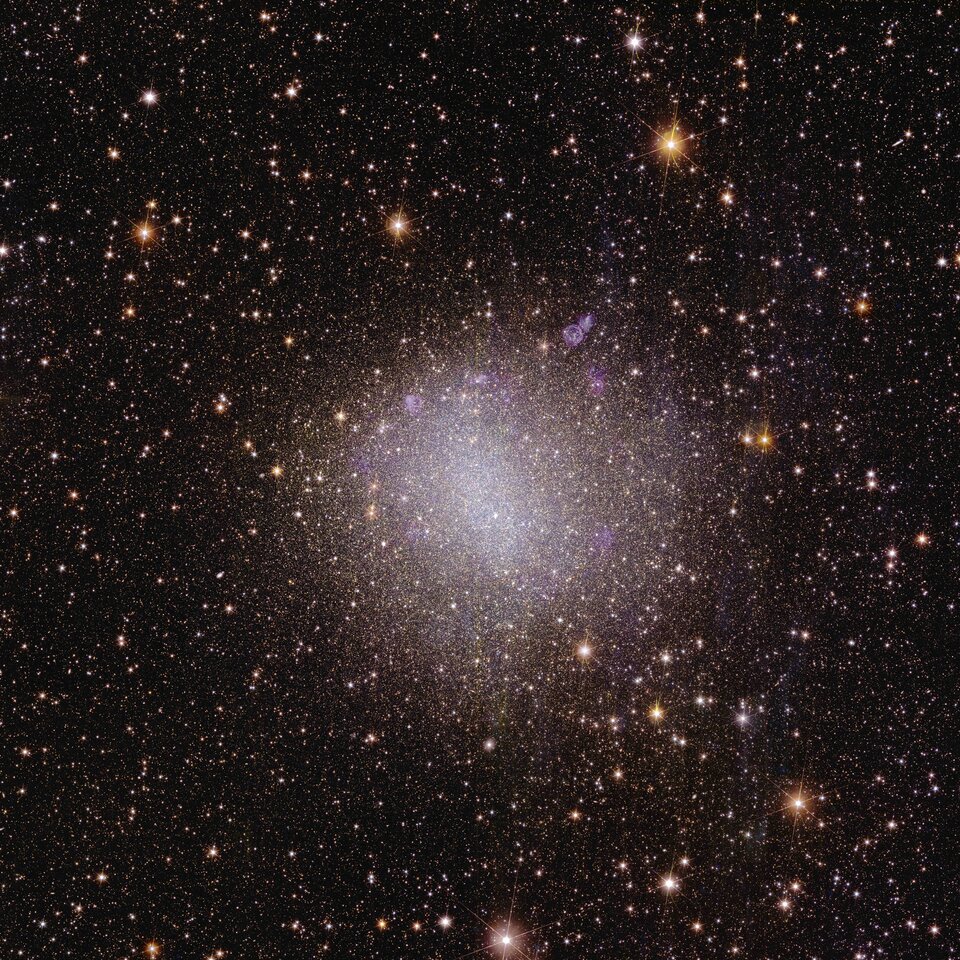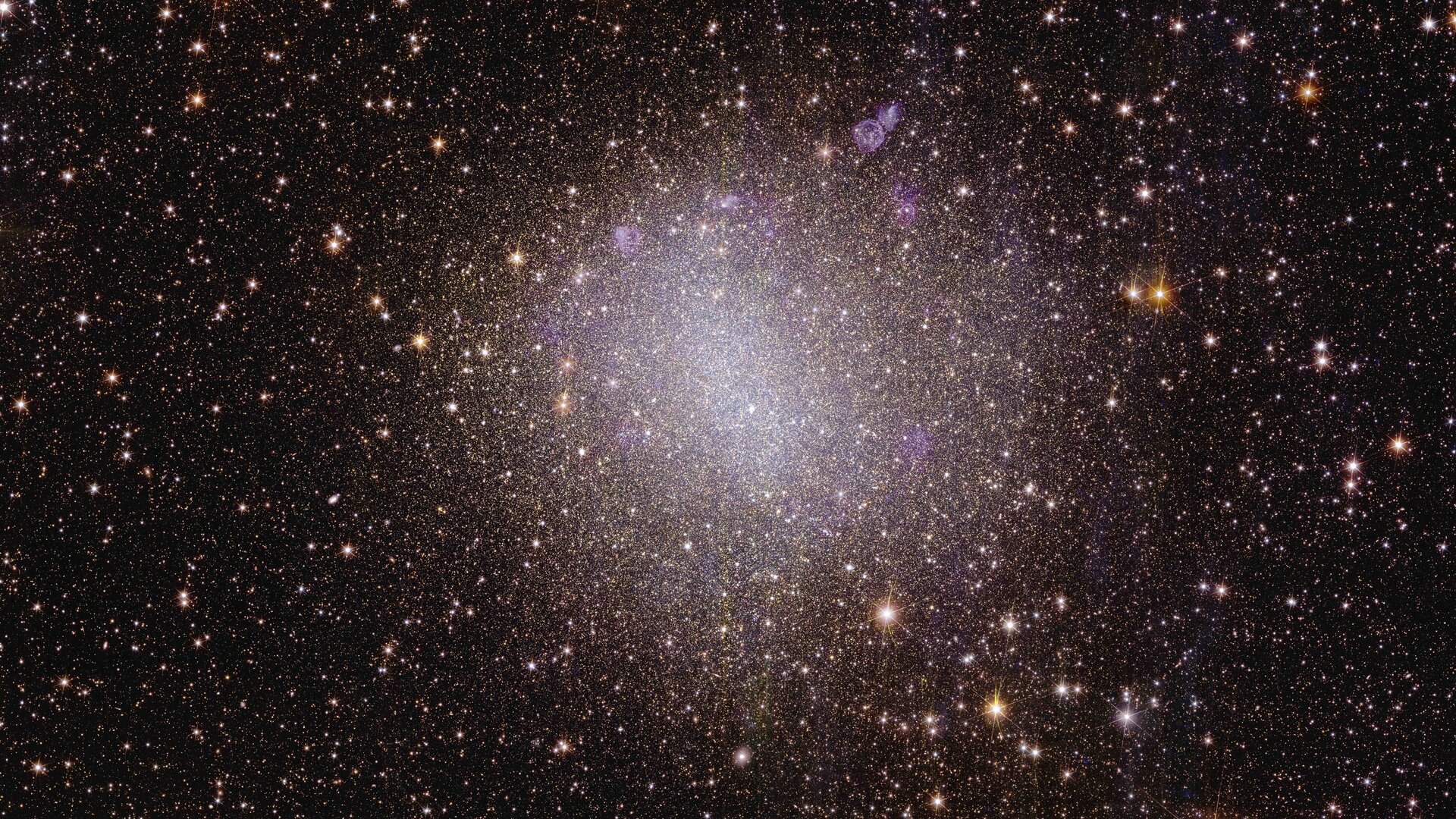Euclid’s view of irregular galaxy NGC 6822
To create a 3D map of the Universe, Euclid will observe the light from galaxies out to 10 billion light-years. Most galaxies in the early Universe don’t look like a neat spiral but are irregular and small. They are the building blocks for bigger galaxies like our own.
This first irregular dwarf galaxy that Euclid observed is called NGC 6822 and is located close by, just 1.6 million light-years from Earth. It is a member of the same galaxy cluster as the Milky Way (called the Local Group), and was discovered in 1884. In 1925 Edwin Hubble was the first to identify NGC 6822 as a ‘remote stellar system’ well beyond the Milky Way.


Access the video
NGC 6822 has been observed many times since, most recently by the NASA/ESA/CSA James Webb Space Telescope. But Euclid is the first to capture the entire galaxy and its surroundings in high resolution in about one hour, which would not be possible with telescopes on the ground (the atmosphere prevents this sharpness) or with Webb (which makes very detailed images of small parts of the sky).
One interesting aspect of this galaxy is that its stars contain low amounts of elements that are not hydrogen and helium. These heavier, ‘metal’ elements are produced by stars over their lifetimes and are therefore not very common in the early Universe (before the first generation of stars had been born, lived and died).

“By studying low-metallicity galaxies like NGC 6822 in our own galactic neighbourhood, we can learn how galaxies evolved in the early Universe,” explains Euclid Consortium scientist Leslie Hunt of the National Institute for Astrophysics in Italy, on behalf of a broader team working on showcasing galaxies imaged by Euclid.

In addition to studying the star-formation history of this galaxy, which can now be done thanks to the colour information from Euclid’s near-infrared instrument and its wide field of view, scientists have already spotted many globular star clusters in this image that reveal clues as to how the galaxy was assembled.
Globular clusters are collections of hundreds of thousands of stars held together by gravity. They are some of the oldest objects in the Universe, and most of their stars were all formed out of the same cloud. That’s why they hold the ‘fossil records’ of the first star-formation episodes of their host galaxies. See also Euclid’s first image of globular cluster NGC 6397.

Click on the image on the right to discover HII regions and globular clusters in Euclid’s view of NGC 6822. HII regions are stretched-out regions of ionised hydrogen atoms in which star formation has recently taken place. Globular clusters are compact collections of hundreds of thousands of stars held together by gravity. Euclid’s infrared observations of this irregular galaxy show how some of these HII regions and globular clusters are distributed across the galaxy.


